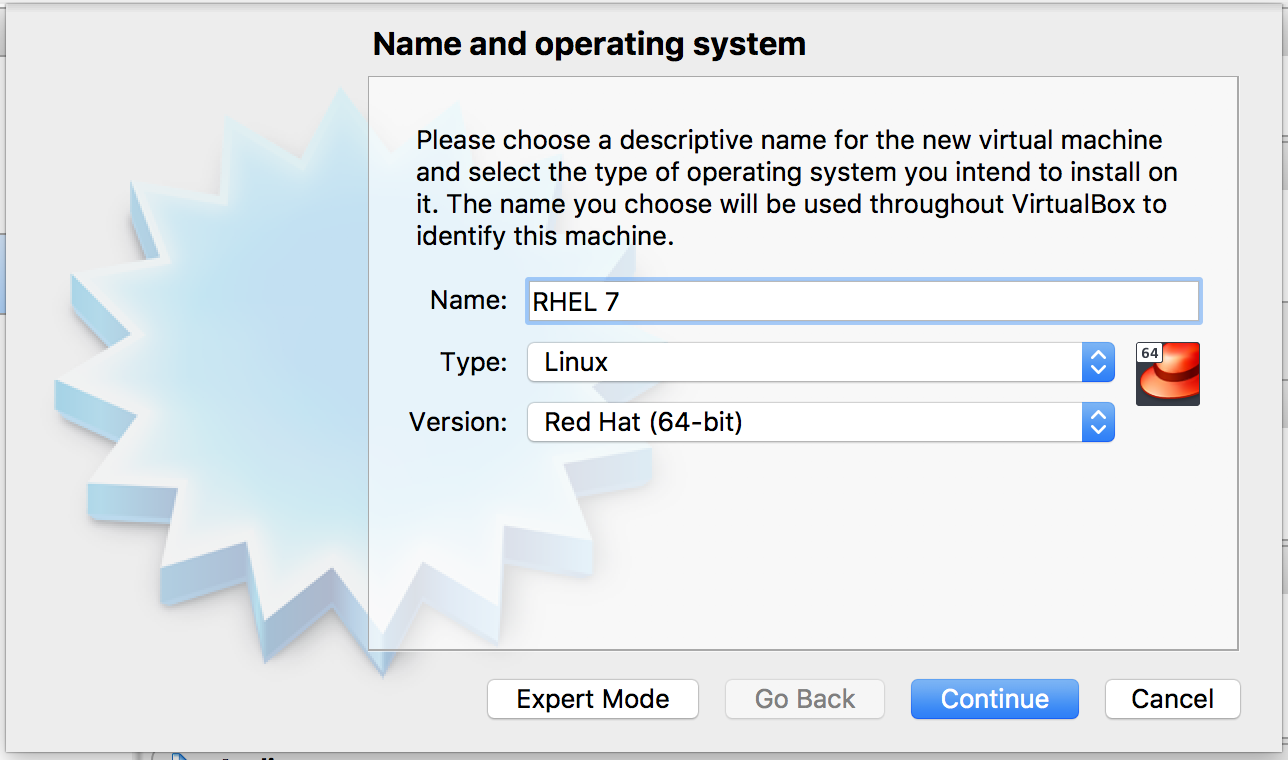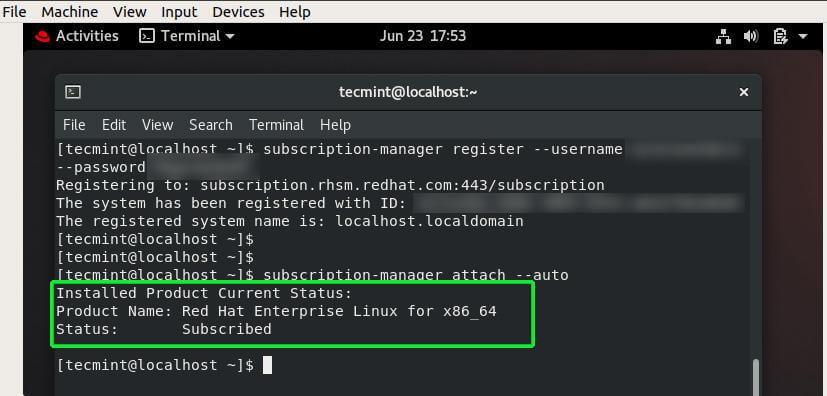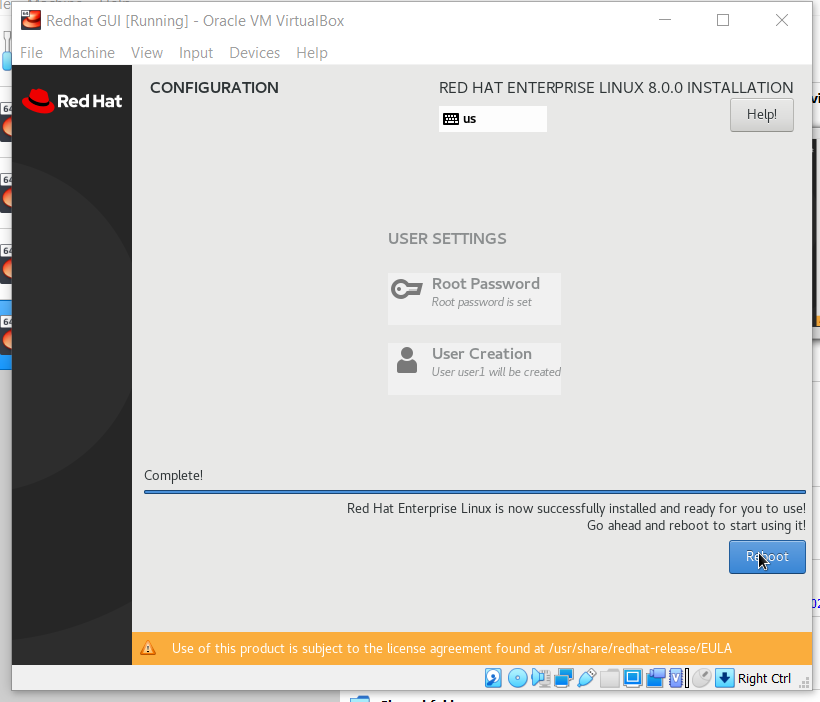

- #RED HAT LINUX ISO FOR VIRTUALBOX FOR FREE#
- #RED HAT LINUX ISO FOR VIRTUALBOX HOW TO#
- #RED HAT LINUX ISO FOR VIRTUALBOX INSTALL#
- #RED HAT LINUX ISO FOR VIRTUALBOX SOFTWARE#
- #RED HAT LINUX ISO FOR VIRTUALBOX PASSWORD#
Once the installation is complete, click on the ‘ Reboot’ button to restart the system. The installation process ensures that all the system packages and the grub bootloader are installed.
#RED HAT LINUX ISO FOR VIRTUALBOX INSTALL#
Once everything is set, the installer will begin to install RHEL 8. Next, create a new user by specifying a username followed by the user’s password.
#RED HAT LINUX ISO FOR VIRTUALBOX PASSWORD#
Click on the ‘ Root Password’ tab and provide a strong password for the root user. But while at it, you will be required to provide a root password and create a new user. With all the salient parameters, click on the “ Begin Installation” button for the installation to commence.

And lastly, in the ‘ System Purpose’ setting, ensure that you select the ‘ Development/Test’ option as the usage for your system and leave all the other entries unchanged. For a production server, however, you may be required to manually partition the hard drive to suit your preferences. In this case, I will select the ‘ Automatic’ partitioning option for the system to automatically partition the hard disk and save the changes. In the “ Installation Destination’ select the hard drive that you’d want to install RHEL on and feel free to select either ‘ Automatic’ or ‘ Manual’ partitioning. In the ‘ Network and hostname’ section, turn on the toggle next to the network interface. In this case, I have chosen to go with the Workstation option which is quite okay for a desktop PC.
#RED HAT LINUX ISO FOR VIRTUALBOX SOFTWARE#
In the ‘ Software selection’ option choose your preferred Base environment and click ‘ Done’. Be sure to adjust your ‘ Time and date’ settings appropriately. Next, click on the “ Language Support” option and select your preferred language and click “ Done”. By default, this is set to English (US) but you can add your preferred language by clicking on the ( + ) symbol below to add another language.

Ensure you click on every one of them and tweak the settings according to your preferences. A summary of all the critical components that need to be configured will be displayed as shown. Select your preferred language and hit the “ Continue” button. Once the RHEL 8 is done with the booting process, the window below will prompt you to select the installation language. Thereafter you will observe some boot messages on the screen as RHEL 8 boots up. Select the first option “ Install Red Hat Enterprise Linux 8.1.0”. On the first screen after powering on the VM, the following options will be printed on the screen. Click on the “ Ok” button and click on the “ Start” button. SO click on “ Storage” –> “ Controller: IDE” and click on the ‘ empty’ disk and select your ISO image file. The only thing remaining is to point the VM to the RHEL 8 ISO image. Once done, click on the “ Create” button. In this example, I have chosen to assign 25.33 GB to my VM. Then allocate some hard disk space for your virtual machine. Next, select the ‘ Dynamically allocated” option and click “ Next”. Ensure that the Hard disk file type is set to VDI ( VirtualBox Disk Image) and click “ Next”. In the next window, select “ Create a virtual hard disk now” and click “ Create”.

In this case, I have chosen to assign a memory capacity of 2048 MB. In the next step, allocate some memory for your virtual machine. Assign a preferred name to your virtual machine and click “ Next”. Open your VirtualBox and click on the “ New” icon. If you wish to install RHEL 8 on VirtualBox as I’ll demonstrate, an ISO image alone is enough. Once you have downloaded the ISO image, you can choose to create a bootable USB drive using Rufus or any other utility of your choice. Thereafter, head out to the RHEL 8 download page and download the RHEL 8 ISO file for free. Once done, proceed over to the Red Hat Login page to complete your profile by providing other details such as your local address. To download the RHEL 8 ISO image at no cost at all, head over the Red Hat developer program and create an account.
#RED HAT LINUX ISO FOR VIRTUALBOX HOW TO#
In this guide, you will learn how to download RHEL 8 ( Red Hat Enterprise Linux) for free, install it on your PC and later on enable free annual subscriptions.
#RED HAT LINUX ISO FOR VIRTUALBOX FOR FREE#
The good news is that you can download RHEL 8 for free and enjoy free annual subscriptions at absolutely no cost! Cool right? Chances are that you might have heard that RHEL 8 comes at a cost and because of that, you might have opted to go for CentOS 8 instead.


 0 kommentar(er)
0 kommentar(er)
